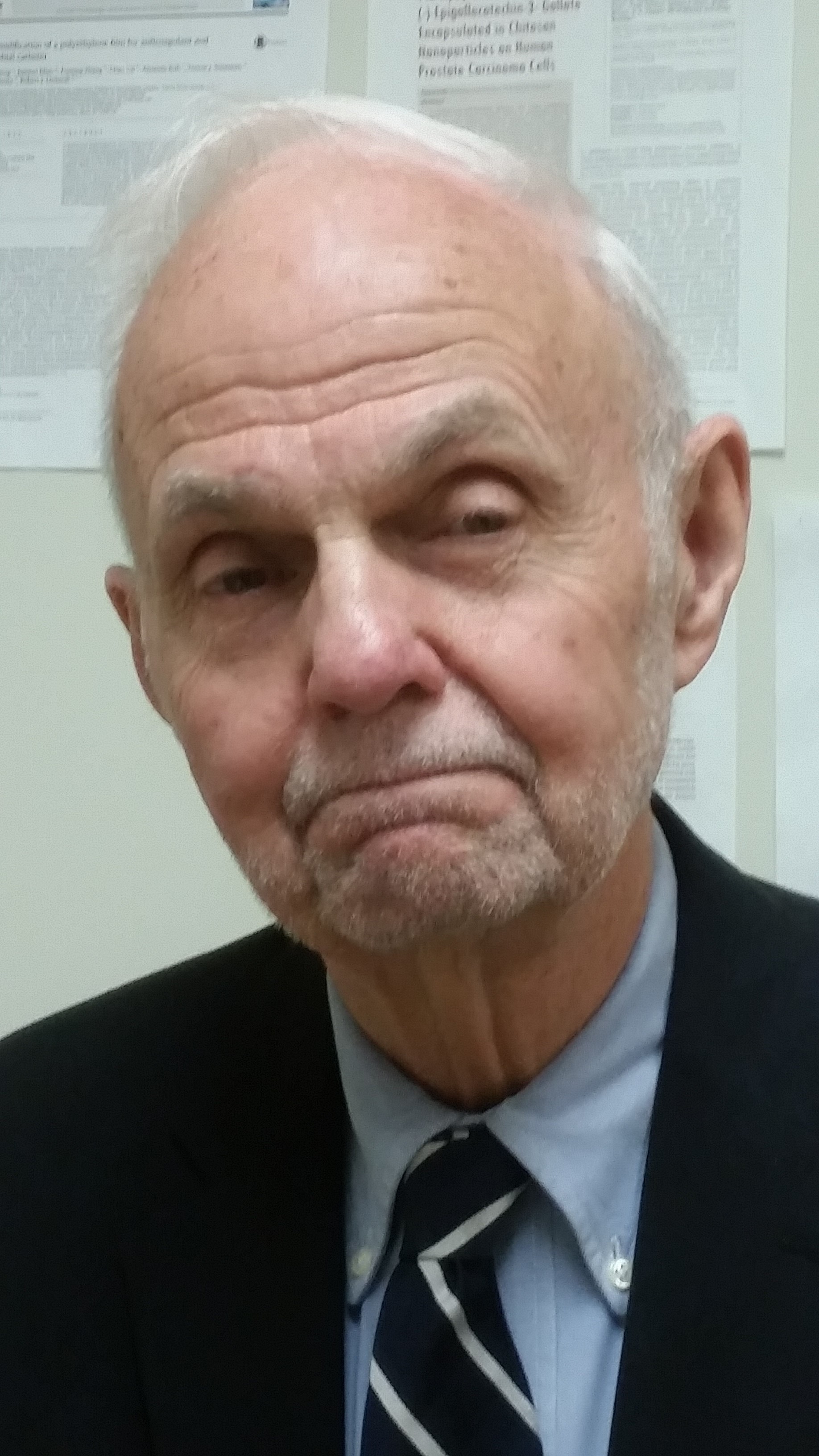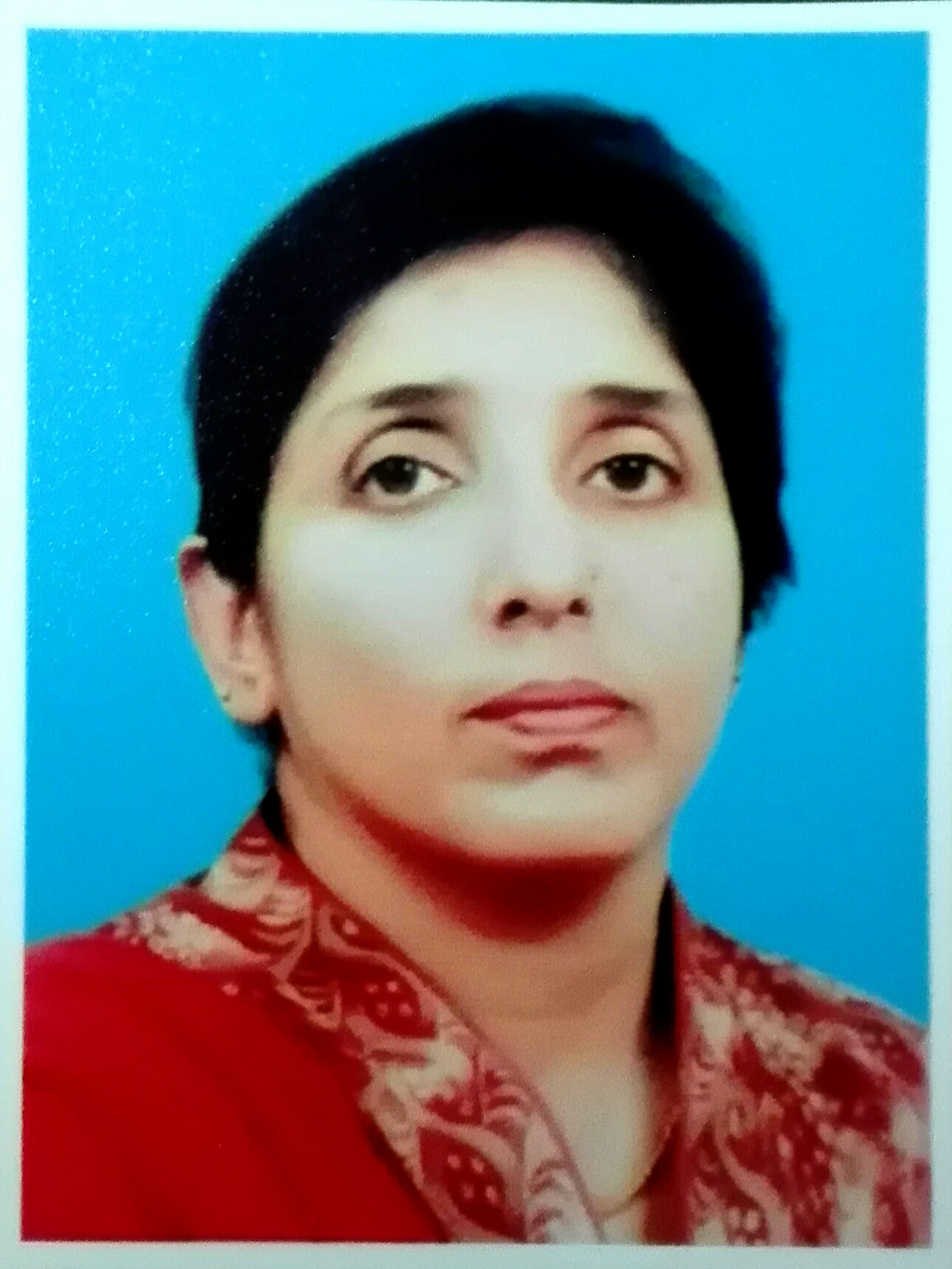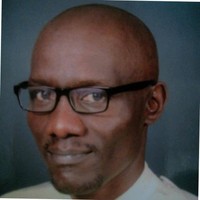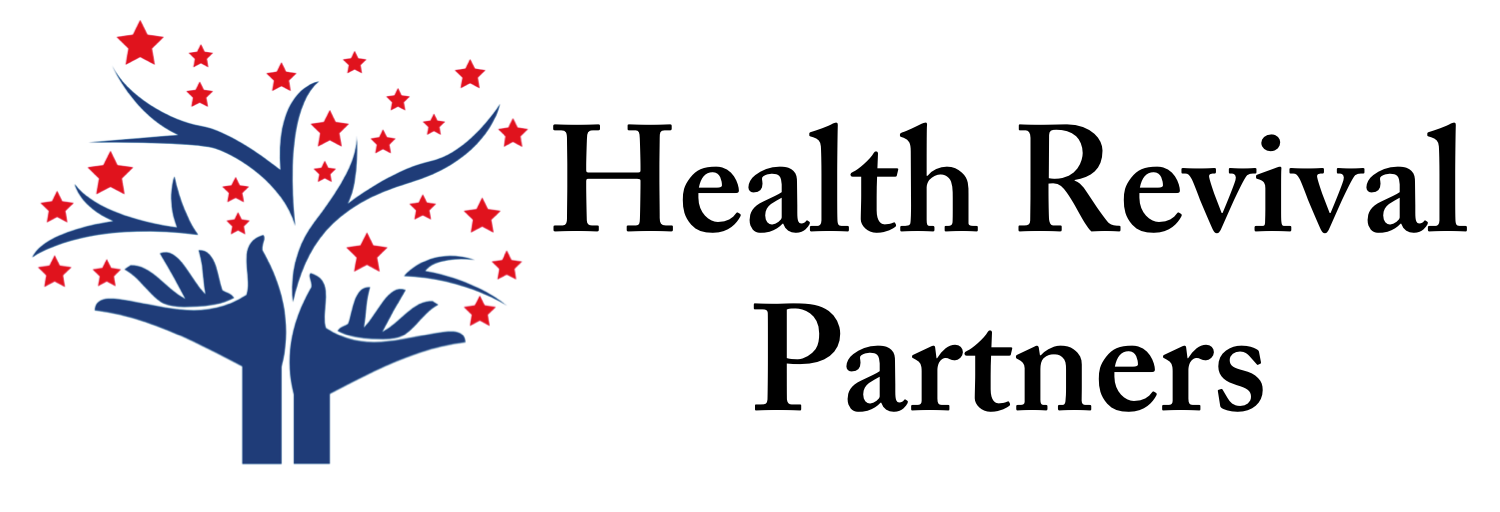Theme: Stem Cell Research- Hope against hype
Mail us at : cellandstemcell@usaconference.org
Stem Cell Conference 2019
Details of Stem Cell Research Conference 2019 in USA:
| Conference Name | Place | Date |
|---|---|---|
| Stem Cell Conference -2019 | Orlando, Florida, USA | Mar 25-26, 2019 |
Conference Series LLC Ltdinvites all the participants from all over the world to attend 11thWorld Congress on Cell Stem Cell Research during March 25-26, 2019 inOrlando,USA which includes promptkeynote presentations,Oral talks,Poster presentationsandExhibitions.
Stem cellsare cells originate in allmulti-cellular organisms. They were isolated in mice in 1981 and in humans in 1998. In humans there are several types of stem cells, each with variable levels ofpotency. Stem cell treatments are a type ofcell therapythat introduces new cells into adult bodies for possible treatment ofcancer,diabetes,neurological disordersand other medical conditions. Stem cells have been used to repairtissuedamaged by disease or age.
Objective
Stem Cell Research-2019has the platform to fulfill theprevailing gapsin thetransformationof this science of hope, to serve promptly with solutions to all in the need. Stem Cell Research 2019 will have an anticipated participation of 120+delegatesacross the world to discuss theconference goal.
Success Story: Cell Science Conference Series LLC Ltd
The success of theCell Science Conference Series LLC Ltdhas given us the prospect to bring the gathering in Orlando,USA. Since its commencement in 2011 Cell Science series has witnessed around 750researchersof great potentials and outstanding research presentations from around the world. Awareness of stem cells and itsapplicationis becoming popular among thegeneral population. Parallel offers of hope add woes to the researchers of cell science due to thepotential limitationsexperienced in thereal-time.
About Organizers
Conference SeriesLLC Ltdis one of the leadingOpen Access publishersand organizers of international scientificconferences and events every year across USA, Europe Asia ConferenceSeriesLLC Ltdhas so far organized 3000+GlobalConferenceseriesLLC Ltd Events with over 600+ Conferences, 1200+ Symposiums and 1200+ Workshops on Medical, Pharma, Engineering, Science, Technology and Business with 700+ peer-reviewed open accessjournalsin basic science, health, and technology. Conference Series LLC Ltdis also in association with more than 1000 International scientific and technological societies and associations and a team of 30,000 eminent scholars, reputed scientists aseditorial boardmembers.
Scientific Sessions
Stem Cell Research-2019will encompass recent researches and findings instem cell technologies,stem cell therapies and transplantations, current understanding ofcell plasticityin cancer and other advancements in stem cell research and cell science .Stem Cell Research-2019 will be a great platform for research scientists andyoung researchersto share their current findings in this field ofapplied science. The major scientific sessions in Stem Cell Research-2019 will focus on the latest and exciting innovations in prominent areas ofcell scienceand stem cell research.
Target Audience:
Eminent personalities,Directors,CEO,President,Vice-president,Organizations,Associationsheads andProfessors,Research scientists,Stem Cell laboratory heads,Post-docs,Studentsother affiliates related to the area of Stem cell research,stem cell linecompanies can be asTarget Audience.
Conference Series LLC Ltd is organizing Stem Cell Researchin 2019 at Orlando, USA. We organize Cancer Meetings in the fields related to, Cell stem Cell, Stem cell Therapies, novel technologies for Disease Treatment, Veterinary Applications, stem cell Bioinformatics tools, Clinical Trails , Disease Modeling Drug Discovery etc.
Track 1:Stem Cells
Stem Cells: An undifferentiated cell of a multicellular organism which is capable of giving rise to indefinitely more cells of the same type, and from which certain other kinds of cell arise by differentiation. Stem cells have the ability to differentiate into specific cell types. The two defining characteristics of a stem cell are perpetual self-renewal and the ability to differentiate into a specialized adult cell type. There are two major classes of stem cells: pluripotent that can become any cell in the adult body, and multipotent that are restricted to becoming a more limited population of cells
Stem Cell and Regenerative Medicine, September 25-26, 2017, Berlin, Germany; Cell therapy and Molecular Medicine, September 27-28, 2017, Chicago, Illinois, USA; Cell Signaling and cancer Therapy, September 27-28, 2017, Chicago, Illinois,USA; ; Cancer therapy and Radiation oncology , August 28th, 29, 2017 Brussels, Belgium Tissue Engineering and Regenerative Medicine, August 23-24, 2017 San Francisco, California, USA; Wisconson Stem Cell Symposium, April 19, 2017, Wisconsin; 18th International Congress of
Developmental Biology, June 18 - 22 , 2017, Singapore; Germinal Stem Cell Biology, June 18-23, 2017, Hong Kong, China; Stem Cells, Cell Therapies, and Bioengineering in Lung Biology and Diseases, July 24-27, 2017, Vermont, Burlington, VT; Advances in Stem Cells and Regenerative Medicine, May 23 - 26, 2017, Heidelberg, Germany.
Track 2:Stem Cell Therapy
Stem-cell therapy is the use of stem cells to treat or prevent a disease or condition. Bone marrow transplant is the most widely used stem-cell therapy, but sometherapies derived from umbilical cord blood are also in use.
Cell therapy and Molecular Medicine, September 27-28, 2017, Chicago, Illinois, USA; Molecular Genetics and Gene Therapy, July 03-05, 2017 Thailand, Bangkok; Cell and Gene therapy, March 26-27, 2017 Berlin, Germany; 25th World Congress on Cancer Therapy, Oct 18-20, 2017, Baltimore, USA; Stem Cell and Regenerative Medicine, September 25-26, 2017, Berlin, Germany; Wisconson Stem Cell Symposium, April 19, 2017, Wisconsin; Advances in Stem Cells and Regenerative Medicine, May 23 - 26, 2017, Heidelberg, Germany; Managing Cell and Human Identity, April 16, 2017, Pennsylvania, USA;
Track 3:Stem Cell Apoptosis And Signal Transduction
Self-reestablishment and multiplication of foundational microorganism populaces is controlled, to some degree, by affectation of apoptosis. The quantity of foundational microorganisms is thusly a harmony between those lost to separation/apoptosis and those increased through multiplication. Apoptosis of immature microorganisms is accepted to be a dynamic procedure which changes because of natural conditions.
Stem Cell and Regenerative Medicine, September 25-26, 2017, Berlin, Germany; Integrative Biology, June 19-21, 2017, London, UK; Systems and Synthetic Biology, July 20-21, 2017, Munich, Germany; Genomics and Pharmacogenomics, June 15-16, 2017, London, UK; Tissue Preservation and Biobanking, August 23-24, 2017, San francisco, Californis, USA; 3rd DNA Replication/Repair Structures and Cancer - Fusion Conferences, February 11, 2018, Cancun, Mexico; Molecular and Cell Biology of Membranes, May 21-23, 2017, Heidelberg, Germany; Mitochondrial Biogenesis and Dynamics in Health, Disease and Aging, May 21-26, 2017, Florida, US; Cell Death and Inflammation, May 29 - June02, 2017, Dublin, Ireland; Rapid Signaling and Genomic Steroid Hormone Actions in Health and Disease, June11-16, 2017, Colorado, US
Track 4:Stem Cell Transplantation
Stem cell transplantation, sometimes referred to as bone marrow transplant, is a procedure that replaces unhealthy blood-forming cells with healthy cells. Stem cell transplants commonly are used to treat Leukemia and lymphoma, cancers that affect the blood and lymphatic system.
Molecular Genetics and Gene Therapy, July03-05, 2017, Thailand, Bangkok; Human Genetics, September 14-15, 2017 Edinburgh, Scotland; Systems and Synthetic Biology, July 20-21, 2017 Munich, Germany; Integrative Biology, June 19-21, 2017, London, UK; Tissue Engineering and Regenerative Medicine, August 23-24 , 2017 San Francisco, California ,USA; Signal Transduction in the Immune System, June 18-23, 2017, Colorado, USA; The Tenth ISABS Conference on Forensic and Anthropologic Genetics and Mayo Clinic Lectures in Individualized Medicine, June 19-24, 2017, Dubrovnik, Croatia; Cancer Immunology and Immunotherapy: Taking a Place in Mainstream Oncology , March 19-23,2017, Whistler, Canada; Managing Cell and Human Identity, April 26, 2017, Philadelphia, U.S.
Track 5:Cell Signaling In Development
Cell signaling mediated by morphogens is essential to coordinate growth and patterning, two key processes that govern the formation of a complex multi-cellular organism. During growth and patterning, cells are specified by both quantitative and directional information. While quantitative information regulates cell proliferation and differentiation, directional information is conveyed in the form of cell polarities instructed by local and global cues
Cell Signaling and cancer Therapy, September 27-28, 2017, Chicago, Illinois,USA; Gynecologic Oncology, July 20-21, 2017, Chicago, Illinois, USA; Oncologist & Diagnostics Conference, August 28-30, 2017, Brussels, Belgium; Leukemia and Hematologic Oncology, October 05-06, 2017, London,UK; Stem Cell and Regenerative Medicine, September 25-26, 2017, Berlin, Germany; Targeting Cancer Metabolism and Signaling , May 25, 2017, Newyork, US; NAD + Metabolism & Signaling 2017, July 09-14, 2017, Louisiana, United States; Protein Kinases and Protein Phosphorylation, August 06-11, 2017, Cambridge, UK; 3rd DNA Replication/Repair Structures and Cancer - Fusion Conferences, February 11-15, 2017, Cancun, Mexico
Track 6:Stem Cell Embryology
Embryonic stem (ES) cells are cells derived from the early embryo that can be propagated indefinitely in the primitive undifferentiated state while remaining pluripotent; they share these properties with Embryonic germ (EG) cells. Candidate Embryonic stem and embryonic germ cell lines from the human blastocyst and embryonic gonad can differentiate into multiple types of somatic cell.
Gynecology & Obstertrics, October 02-04, 2017 Barcelona, spain; 3rd Annual Conference on Gynecologic Oncology, July 20-21, 2017, Chicago, USA; Stem Cell and Biobanking, October 23-24, 2017 Osaka, Japan, Cancer science and therapy, Baltimore, Maryland, USA, oct ber18 - 20, 2017; 2nd DNA Replication as a Source of DNA Damage Conference, July 03-06, 2017, Rome italy; Advances in Stem Cells and Regenerative Medicine, May 23 - 26, 2017, Heidelberg, Germany; Managing Cell and Human Identity, April 16, 2017, Pennsylvania, USA
Track 7:Regeneration And Therapeutics
Regeneration is the process of renewal, restoration, and growth that makes genomes, cells, organisms, and ecosystems resilient to natural fluctuations or events that cause disturbance or damage. Therapeutics is the branch of medicine concerned with the treatment of disease and the action of remedial agents.
Cancer therapy and Radiation oncology , August 28th, 29, 2017 Brussels, Belgium; Gastrointestinal and cancer therapeutics, Baltimore, USA october 16-18, 2017; Cancer science and therapy, Baltimore, Maryland, USA, oct ober18 - 20, 2017; Cell biology of the neuron: Polarity, plasticity and regeneration, May 07-10, 2017, Heraklion, Greece; Annual Congress On Cell Science, Stem Cell Biology And Therapeutics 2017, November 16-17, 2017, Atlanata, US; Signal Transduction in the Immune System, June 18-23, 2017, Colorado, USA; World Advanced Therapies & Regenarative Medicine, May, 17-19, 2017, London, UK; World Stem Cell and Regenerative Medicine, August 07-09, 2017, Sweden; Tissue Repair & Regeneration, June 4-9, 2017, New London
Track 8:Tissue Engineering:
Tissue engineering can be defined as the use of a combination of cells, engineering materials, and suitable biochemical factors to improve or replace biological functions in an effort to improve clinica l procedures for the repair of damaged tissues and organs.
Tissue Engineering and Regenerative Medicine, August 23-24, 2017 San Francisco, California, USA; Tissue Preservation and Biobanking, August 23-24, 2017, San francisco, Californis, USA; Tissue Science and Regenerative Medicine, October 02-04, 2017 Barcelona, Spain; Solicitation of Proposals for the TERMIS-AM 2020 Conference, July 31, 2017,
Track 9:Diseases And Stem Cell Treatment:
Stem cell research is perhaps the most exciting medical technology of the 21st Century. Stem cells hold the promise of treatments and cures for more than 70 major diseases and conditions that affect millions of people, including diabetes, Parkinson's, Alzheimer's, cancer, multiple sclerosis, Lou Gehrig's Disease (ALS), spinal cord injuries, blindness, and HIV/AIDS.
Track 10:Novel Stem Cell Technologies:
Stem cell technology is a rapidly developing field that combines the efforts of cell biologists, geneticists, and clinicians and offers hope of effective treatment for a variety of malignant and non-malignant diseases. Stem cells are defined as totipotent progenitor cells capable of self renewal and multilineage differentiation. Stem cells survive well and show stable division in culture, making them ideal targets for in vitro manipulation
Track 11:Reprogramming Stem Cells: Computational Biology:
Computational biology, a branch of biology involving the application of computers and computer science to the understanding and modeling of the structures and processes of life. It entails the use of computational methods for the representation and simulation of biological systems, as well as for the interpretation of experimental data, often on a very large scale. The fields of stem cell biology and regenerative medicine research are fundamentally about understanding dynamic cellular processes such as development, reprogramming, repair, differentiation and the loss, acquisition or maintenance of pluripotency. In order to precisely decipher these processes at a molecular level, it is critical to identify and study key regulatory genes and transcriptional circuits. Modern high-throughput molecular profiling technologies provide a powerful approach to addressing these questions as they allow the profiling of tens of thousands of gene products in a single experiment. Whereas bioinformatics is used to interpret the information produced by such technologies
Cancer genetics and Epigentics, October 26-28, Osaka, Japan; Epigenetics & Chromatin , Noveber 06-08, 2017 Frankfurt, Germany
Track 12:Tumour cell science:
Cancer cells are cells gone wrong in other words, they no longer respond to many of the signals that control cellular growth and death. Cancer cells originate within tissues and, as they grow and divide, they diverge ever further from normalcy. Over time, these cells become increasingly resistant to the controls that maintain normal tissue and as a result, they divide more rapidly than their progenitors and become less dependent on signals from other cells. Cancer cells even evade programmed cell death, despite the fact that their multiple abnormalities would normally make them prime targets for apoptosis. In the late stages of cancer, cells break through normal tissue boundaries and metastasize to new sites in the body.
Oncology & Cancer , May 25-27, 2017 Osaka, Japan; Cancer Diagnostics, November 27-28, 2017 Dubai, UAE; Cancer Science and Therapy, July 17-19, 2017 Libson, Portugal; Cancer Biology R&D and Market, September 18-19, 2017 Philadelphia, Pennsylvania, USa; 26th word Cancer Convention, November 27-28, 2017 Dubai, UAE;
Track 13:Stem Cell Banking:
An amniotic stem cell bank is a facility that stores stem cells derived from amniotic fluid for future use. Stem cell samples in private banks are stored specifically for use by the individual person from whom such cells have been collected and the banking costs are paid by such person
Stem Cell and Biobanking, October 23-24, 2017 Osaka, Japan; Tissue Preservation and Biobanking, August 23-24, 2017, San francisco, Californis, USA; 11th International Conference on Hematology and Hematological Oncology, November 8-9, 2017, Las Vegas, USA,
Track 14:Cellular Plasticity And Reprogramming:
Stem cell plasticity refers to the ability of some stem cells to give rise to cell types, formerly considered outside their normal repertoire of differentiation for the location where they are found. Included under this umbrella title is often the process of “transdifferentiation” – the conversion of one differentiated cell type into another, and metaplasia – the conversion of one tissue type into another.
Track 15:Epigenetics:
The study of changes in organisms caused by modification of gene expression rather than alteration of the genetic code itself. Epigenetics are stable heritable traits that cannot be explained by changes in DNA sequence
Cancer genetics and Epigentics, October 26-28, Osaka, Japan; Epigenetics & Chromatin , Noveber 06-08, 2017 Frankfurt, Germany; World Congress on Preventive oncology, July 20-21, 2017, Chicago, USA;
Track 16:Cell And Gene Therapy:
Gene therapy is an experimental technique that uses genes to treat or prevent disease. In the future, this technique may allow doctors to treat a disorder by inserting a gene into a patient’s cells instead of using drugs or surgery
Cell therapy and Molecular Medicine, September 27-28, 2017, Chicago, Illinois, USA; Molecular Genetics and Gene Therapy, July 03-05, 2017 Thailand, Bangkok; Cell and Gene therapy, March 26-27, 2017 Berlin, Germany; 25th World Congress on Cancer Therapy, Oct 18-20, 2017, Baltimore, USA; Stem Cell and Regenerative Medicine, September 25-26, 2017, Berlin, Germany; Wisconson Stem Cell Symposium, April 19, 2017, Wisconsin; Advances in Stem Cells and Regenerative Medicine, May 23 - 26, 2017, Heidelberg, Germany; Managing Cell and Human Identity, April 16, 2017, Pennsylvania, USA;
Track 17:Stem Cell Biomarkers:
Stem cell markers are genes and their protein products used by scientists to isolate and identify stem cells. Stem cells can also be identified by functional assays. Molecular biomarkers serve as valuable tools to classify and isolate embryonic stem cells (ESCs) and to monitor their differentiation state by antibody-based techniques. ESCs can give rise to any adult cell type and thus offer enormous potential for regenerative medicine and drug discovery
Biomarkers, October 26-28, 2017 Osaka, Japan; 9th World Biomarkers Congress, August 24-25, 2017 Birmingham, UK; 10th Annual World Congress on Biomarkers & Clinical Research, October 18-20, 2017, Baltimore, USA;
Track 18:Cell And Organ Regeneration:
Regenerative medicine is a branch of translational research in tissue engineering and molecular biology which deals with the "process of replacing, engineering or regenerating human cells, tissues or organs to restore or establish normal function.
Tissue Repair & Regeneration, June 4-9, 2017, New London; The Biologyof Regenerative Medicine, April 25-27, 2017 Hinxton, Cambridge, UK; Innovations In Cancer Research and Regenerative Medicine, September 10-13, 2017, Ho Chi Minh city, Viet Nam; International Symposium On Regenerative Rehabilation, November 1-3, 2017, Pittsburgh, USA; Mouse Development, Stem Cells & Cancer, June 7 - 26, 2017, Newyork
Track 19:Stem Cell Niches:
Stem-cell niche refers to a microenvironment, within the specific anatomic location where stem cells are found, which interacts with stem cells to regulate cell fate. The word 'niche' can be in reference to the in vivo or in vitro stem-cell microenvironment.During embryonic development, various niche factors act on embryonic stem cells to alter gene expression, and induce their proliferation or differentiation for the development of the fetus.
Track 20:Drugs And Clinical Developments:
The clinical development plan is a complex document that entails the entire clinical research strategy of a drug, describing the clinical studies that will be carried out for a pharmaceutical entity, created by a pharmaceutical company
Track 21:Stem Cells And Veterinary Applications:
The stem cell field in veterinary medicine continues to evolve rapidly both experimentally and clinically. Stem cells are most commonly used in clinical veterinary medicine in therapeutic applications for the treatment of musculoskeletal injuries in horses and dogs. New technologies of assisted reproduction are being developed to apply the properties of spermatogonial stem cells to preserve endangered animal species.same methods can be used to generate transgenic animals for production of pharmaceuticals or for use as biomedical models
Animal and Human Cell Culture, September 25-27, 2017 Jackson ville, USA; Animal Health & Veterinary Medicine, October 20-21, 2017 toronto, Canada,
Track 22:Plant And Cell Physiology:
Cell physiology including cellular electrophysiology is the biological study of the activities which take place in a cell to keep it alive. The term "physiology" refers to all the normal functions that take place in a living organism. Absorption of water by roots, production of food in the leaves, and growth of shoots towards light are examples of plant physiology. The heterotrophic metabolism of food derived from plants and animals and the use of movement to obtain nutrientsare characteristic of animal physiology
Plant Genomics, July 03-05, 2017 Bangkok, Thailand; Medicinal Plants and Natural Products Research, October 02-03, 2017 Kuala Lumpur,Malaysia; Plant Science &Physiology, June 26-18, 2017 Bangkok, Thailand; Plant Science, Aug 07-09, 2017 Rome, Italy; Agriculture & Horticulture, Oct 02-04, 2017 London, UK
Track 23:Cell Differentiation And Disease Modelling:
A disease model is an animal or cells displaying all or some of the pathological processes that are observed in the actual human or animal disease. Studying disease models aids understanding of how the disease develops and testing potential treatment approaches
Drug Design& Drug Formulation, Oct19-20,2017 Seoul, South Korea; Normal and cancer stem cells: discovery, diagnosis and therapy October 5-6, 2017, Kyiv, Ukraine
Track 24:Stem Cell Medicine: Social And Political Challenges:
The regulation of stem cell research is an issue that has drawn much comment, criticism and even judicial arbitration in recent years.
11th World Congress on Cell & Stem Cell Research
The success of the 10th Cell Science conferences series LLC Ltd has given us the prospect to bring the gathering one more time for our 11th World Congress 2019 meet in Orlando, USA. Since its commencement in 2011 cell science series has perceived around 750 researchers of great potentials and outstanding research presentations around the globe. The awareness of stem cells and its application is increasing among the general population that also in parallel offers hope and add woes to the researchers of cell science due to the potential limitations experienced in the real-time.
Stem Cell Research-2019 has the goal to fill the prevailing gaps in the transformation of this science of hope to promptly serve solutions to all in the need. World Congress 2019 will have an anticipated participation of 100-120 delegates from around the world to discuss the conference goal.
History of Stem cells Research
Stem cells have an interesting history, in the mid-1800s it was revealed that cells were basically the building blocks of life and that some cells had the ability to produce other cells. Efforts were made to fertilize mammalian eggs outside of the human body and in the early 1900s, it was discovered that some cells had the capacity to generate blood cells. In 1968, the first bone marrow transplant was achieved successfully to treat two siblings with severe combined immunodeficiency. Other significant events in stem cell research include:
1978: Stem cells were discovered in human cord blood
1981: First in vitro stem cell line developed from mice
1988: Embryonic stem cell lines created from a hamster
1995: First embryonic stem cell line derived from a primate
1997: Cloned lamb from stem cells
1997: Leukaemia origin found as haematopoietic stem cell, indicating possible proof of cancer stem cells
Funding in USA:
No federal law forever did embargo stem cell research in the United States, but only placed restrictions on funding and use, under Congress's power to spend. By executive order on March 9, 2009, President Barack Obama removed certain restrictions on federal funding for research involving new lines of human embryonic stem cells. Prior to President Obama's executive order, federal funding was limited to non-embryonic stem cell research and embryonic stem cell research based upon embryonic stem cell lines in existence prior to August 9, 2001. In 2011, a United States District Court "threw out a lawsuit that challenged the use of federal funds for embryonic stem cell research”.
Members Associated with Stem Cell Research:
Discussion on Development, Regeneration, and Stem Cell Biology takes an interdisciplinary approach to understanding the fundamental question of how a single cell, the fertilized egg, ultimately produces a complex fully patterned adult organism, as well as the intimately related question of how adult structures regenerate. Stem cells play critical roles both during embryonic development and in later renewal and repair. More than 65 faculties in Philadelphia from both basic science and clinical departments in the Division of Biological Sciences belong to Development, Regeneration, and Stem Cell Biology. Their research uses traditional model species including nematode worms, fruit-flies, Arabidopsis, zebrafish, amphibians, chick and mouse as well as non-traditional model systems such as lampreys and cephalopods. Areas of research focus include stem cell biology, regeneration, developmental genetics, and cellular basis of development, developmental neurobiology, and “evo-devo” (Evolutionary developmental biology).
Stem Cell Market Value:
Worldwide many companies are developing and marketing specialized cell culture media, cell separation products, instruments and other reagents for life sciences research. We are providing a unique platform for the discussions between academia and business.
Global Tissue Engineering & Cell Therapy Market, By Region, 2009 2019
$Million

Figure 1: Market by Geography
Why to attend???
Stem Cell Research-2019 could be an outstanding event that brings along a novel and International mixture of researchers, doctors, leading universities and stem cell analysis establishments creating the conference an ideal platform to share knowledge, adoptive collaborations across trade and world, and assess rising technologies across the world. World-renowned speakers, the most recent techniques, tactics, and the newest updates in cell science fields are assurances of this conference.
A Unique Opportunity for Advertisers and Sponsors at this International event:
http://stemcell.conferenceseries.com/sponsors.php
UAS Major Universities which deals with Stem Cell Research
· University of Washington/Hutchinson Cancer Center
· Oregon Stem Cell Center
· University of California Davis
· University of California San Francisco
· University of California Berkeley
· Stanford University
· Mayo Clinic
Major Stem Cell Organization Worldwide:
· Norwegian Center for Stem Cell Research
· France I-stem
· Stem Cell & Regenerative Medicine Ctr, Beijing
· Stem Cell Research Centre, Korea
· NSW Stem Cell Network
· Monash University of Stem Cell Labs
· Australian Stem Cell Centre
Target Audience:
Eminent personalities, Directors, CEO, President, Vice-president, Organizations, Associations heads and Professors, Research scientists, Stem Cell laboratory heads, Post-docs, Students other affiliates related to the area of Stem cell research, stem cell line companies can be as Target Audience
Market Analysis of Stem Cell Therapy:
The global market for stem cell products was $3.8 billion in 2011. This market is expected to reach nearly $4.3 billion in 2012 and $6.6 billion by 2016, increasing at a compound annual growth rate (CAGR) of 11.7% from 2011 to 2016.
Americas is the largest region of global stem cell market, with a market share of about $2.0 billion in 2013. The region is projected to increase to nearly $3.9 billion by 2019, with a CAGR of 13.9% for the period of 2013 to 2019
Europe is the second largest segment of the global stem cell market and is expected to grow at a CAGR of 13.4% reaching about $2.4 billion by 2019 from nearly $1.4 billion in 2013.

Figure 2: Global Market
Companies working for Stem Cells:
|
Company |
Location |
Business Type |
|
Cynata Therapeutics |
Armadale, Australia |
Stem Cell Manufacturing Technology |
|
Mesoblast |
Melbourne, Australia |
Regenerative Medicine |
|
Activartis |
Vienna, Austria |
Dendritic Cell-Based Cancer Immunotherapy |
|
Aposcience |
Vienna, Austria |
Treatments composed of mixture of cytokines, growth factors and other active components |
|
Cardio3 Biosciences |
Mont-Saint-Guibert, Belgium |
Stem Cell Differentiation |
|
Orthocyte (BioTime) |
Alameda, CA |
Cellular Therapies |
|
Capricor |
Beverly Hills, CA |
Stem Cell Heart Treatments |
|
Life Stem Genetics |
Beverly Hills, CA |
Autologous stem cell therapy |
|
International Stem Cell |
Carlsbad, CA |
Proprietary Stem Cell Induction |
|
Targazyme |
Carlsbad, CA |
Cell Therapy |
|
DaVinci Biosciences |
Costa Mesa, CA |
Cellular Therapies |
|
Invitrx Therapeutics |
Irvine, CA |
Autologous Stem Cell Therapy, Therapeutic & Cosmetic |
General Trends within the Stem Cell Sector
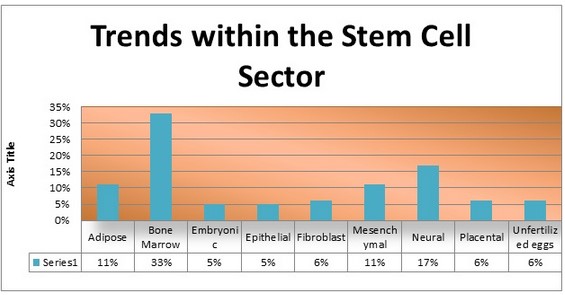
Figure 3: This Statistics shows that Most popular sources of stem cells are adult bone marrow/blood and neural tissues
Stem Cell Software’s :
- Cryus : Cryus is developed specially for Cord Blood Banks, Donor Centers, Stem Cells Collection Centers, Biotech Laboratories and Tissue Banks.
- Label-InnThe: Which allows to record the donor or the patient personal data into the database and generates the Donation Identification Number (DIN) according to ICCBBA international standard ISBT128. It serves as labelling software for blood samples and Stem Cells products.
Products Manufactured By Industry Related to Stem Cell:
RoboSep™-16 is the latest RoboSep™ instrument ingenuous for performing fully-automated cell separation from a huge number of samples. Using EasySep™, the column-free immunomagnetic cell separation system, RoboSep™-16 isolates desired cells from a wide range of samples from different species, tissue sources or sizes using positive or negative selection. Through an intuitive user interface, the RoboSep™-16 simultaneously isolates cells from up to sixteen samples with minimal hands on time. By automating all reagent and sample handling steps, and through the use of disposable pipette tips, the RoboSep™-16 rapidly isolates all desired cells while minimizing the risk of sample cross-contamination. After completion of the cell isolation procedure, cells of interest are immediately available for any downstream application.
The EasySep™ Mouse CD25 Regulatory T Cell Positive Selection Kit is designed to isolate highly purified CD25+ cells from single cell suspensions of splenocytes or other tissues by positive selection. Desired cells are labeled with antibodies and magnetic particles. The cells are separated without columns using an EasySep™ magnet. Unwanted cells are simply poured off, while desired cells remain in the tube. Isolated cells are immediately ready for downstream applications such as flow cytometry, cell culture, or suppression assays.
Featured Research:
Gene therapy gives assurance for severe combined immunodeficiency, Researchers have initiated that gene therapy using a improved delivery system, or vector, can restore the immune systems of children with X-linked severe combined immunodeficiency (SCID-X1), a rare, life-threatening inherited condition that primarily affects boys. Previous efforts to treat SCID-X1 with gene therapy were initially efficacious, but approximately one-quarter of the children developed leukemia two to five years after treatment. Results from a study partially funded by the National Institute of Allergy and Infectious Diseases (NIAID), a component of the National Institutes of Health (NIH), suggest that the new vector is equally effective at restoring immunity and may be safer than previous approaches.
References:
http://www.stemcell.com/en/Products/All-Products/EasySep-Mouse-CD25-Regulatory-T-Cell-Positive-Selection-Kit.aspx
- http://www.stemcell.com/en/Products/All-Products/EasySep-Mouse-CD25-Regulatory-T-Cell-Positive-Selection-Kit.aspx
- http://seekingalpha.com/article/1347281-investing-in-the-stem-cell-sector-an-overview
- http://mbbnet.umn.edu/scmap/scresearchmap.html
- http://biopharmguy.com/links/company-by-location-stem-cells.php
- http://www.marketwired.com/press-release/latest-research-shows-stem-cell-product-market-to-reach-6-billion-by-2016-1688406.htm
Conference Highlights
- Cell Signaling & Cell Communication
- Stem Cells & Types
- Stem Cell Epigenetics
- Stem Cell Niches & Bio banking
- Stem Cell Apoptosis and Signal Transduction
- Stem Cell Embryology
- Stem Cell Therapies
- Stem Cell Biomarkers
- Diseases and Stem Cell Treatment
- Stem Cells technology
- Re-Evaluating Strategies for Transplantation of stem cells
- Tissue Engineering and Regenerative Medicine
- Novel Technologies
- Disease Modelling and Drug Discovery
- Tumour cell science
- Applications in Nanotechnology
- Cellular Plasticity And Reprogramming
- Cell And Organ Regeneration
- Stem Cells and Veterinary Applications
- Clinical Trials on Cell & Gene Therapy
- Regulatory and Reimbursement Issues
- Stem Cell Market World Wide
To share your views and research, please click here to register for the Conference.
To Collaborate Scientific Professionals around the World
| Conference Date | March 25-26, 2019 | ||
| Sponsors & Exhibitors |
|
||
| Speaker Opportunity Closed | Day 1 | Day 2 | |
| Poster Opportunity Closed | Click Here to View | ||
Useful Links
Special Issues
All accepted abstracts will be published in respective Our International Journals.
- Journal of Cell Science & Therapy
- Journal of Stem Cell Research & Therapy
- Cell & Developmental Biology
Abstracts will be provided with Digital Object Identifier by













